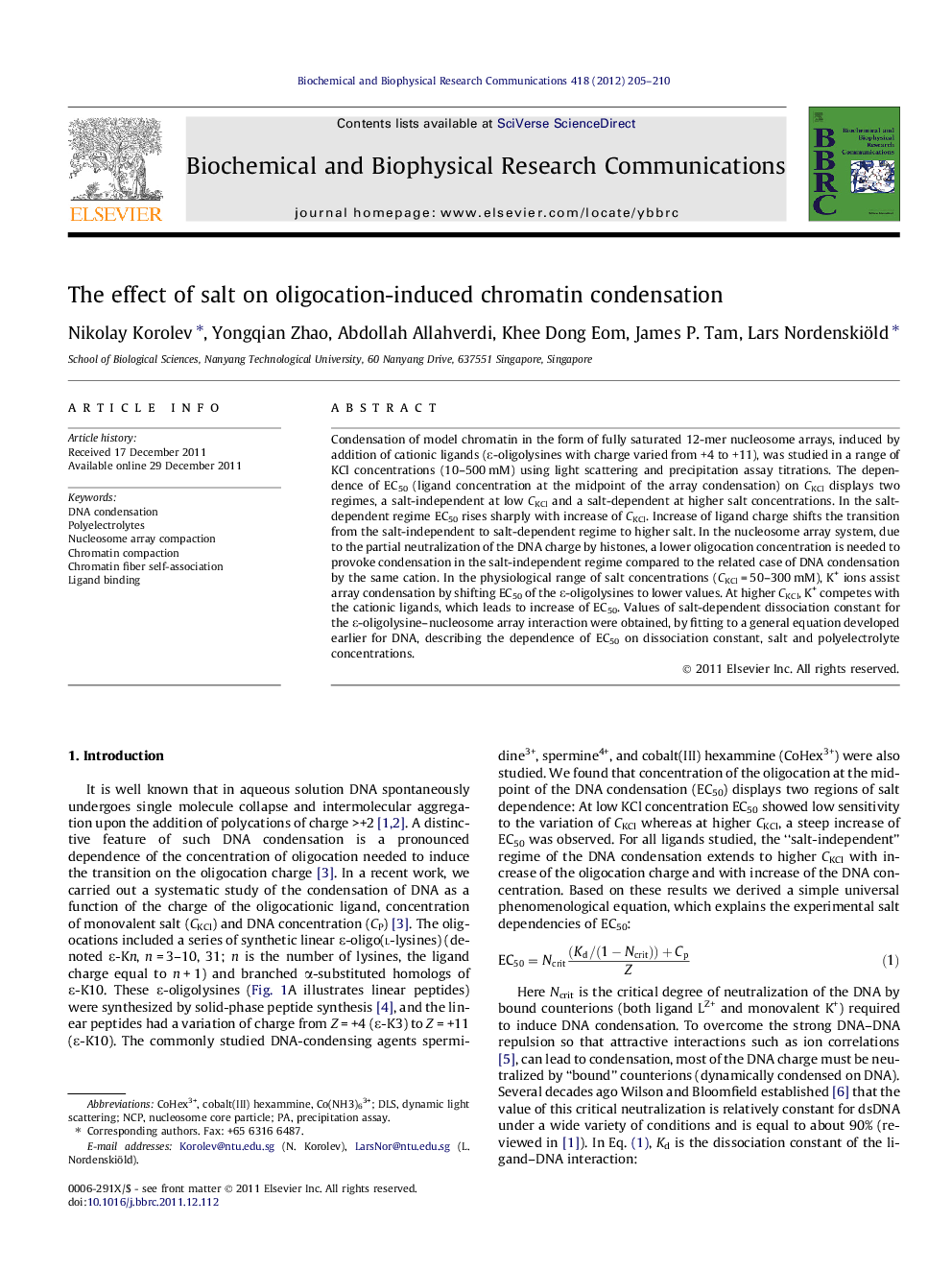| Article ID | Journal | Published Year | Pages | File Type |
|---|---|---|---|---|
| 1930024 | Biochemical and Biophysical Research Communications | 2012 | 6 Pages |
Condensation of model chromatin in the form of fully saturated 12-mer nucleosome arrays, induced by addition of cationic ligands (ε-oligolysines with charge varied from +4 to +11), was studied in a range of KCl concentrations (10–500 mM) using light scattering and precipitation assay titrations. The dependence of EC50 (ligand concentration at the midpoint of the array condensation) on CKCl displays two regimes, a salt-independent at low CKCl and a salt-dependent at higher salt concentrations. In the salt-dependent regime EC50 rises sharply with increase of CKCl. Increase of ligand charge shifts the transition from the salt-independent to salt-dependent regime to higher salt. In the nucleosome array system, due to the partial neutralization of the DNA charge by histones, a lower oligocation concentration is needed to provoke condensation in the salt-independent regime compared to the related case of DNA condensation by the same cation. In the physiological range of salt concentrations (CKCl = 50–300 mM), K+ ions assist array condensation by shifting EC50 of the ε-oligolysines to lower values. At higher CKCl, K+ competes with the cationic ligands, which leads to increase of EC50. Values of salt-dependent dissociation constant for the ε-oligolysine–nucleosome array interaction were obtained, by fitting to a general equation developed earlier for DNA, describing the dependence of EC50 on dissociation constant, salt and polyelectrolyte concentrations.
► DNA and chromatin display similar properties in oligocation-induced condensation. ► Chromatin fiber behaves as a polyelectrolyte during its folding and self-association. ► Ligand charge, salt, and DNA concentrations, ligand binding constant define chromatin compaction. ► Simple equation describes experimental data on DNA and chromatin condensation.
